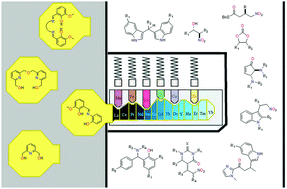Transformative 3d–4f coordination cluster carriers
Abstract
The aim of this perspective is to summarise the use of the reported 3d–4f Coordination Clusters (CCs) in catalytic reactions and to demonstrate the potential of this emerging field. The pioneering work of Shibasaki, Matsunaga and others, demonstrated the use of 3d–4f in situ systems to catalyse asymmetric organic transformations. Our recent studies show that well characterised 3d–4f CCs catalyse numerous organic transformations and useful mechanistic aspects of their catalysis can be obtained. Furthermore, we have shown that by manipulation of the metal ion coordination environment; the nature of the 3d and lanthanide ions and the organic periphery of the ligand can all improve the efficacy of a 3d–4f CC catalyst. All in situ formed and well characterized 3d–4f CCs involved in catalysis are discussed.

- This article is part of the themed collection: 2018 Frontier and Perspective articles


 Please wait while we load your content...
Please wait while we load your content...